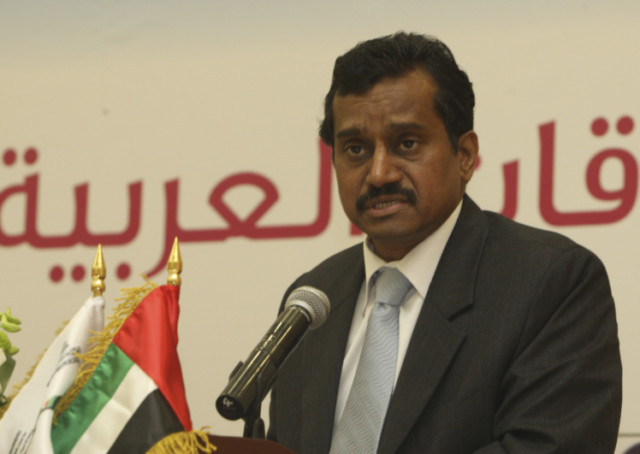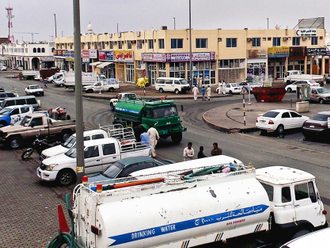
M.K. Lokesh, Indian Ambassador to the UAE, says despite the global economic downturn, the relationship between the two countries is only getting better.
Evidence of this is in the growing bilateral trade. “For the first six months of 2012-13, it has already reached $38.8 billion (Dh142.47 billion). Despite the global economic downturn, bilateral trade increased from $66.5 billion in 2010-11 to $71.7 billion in 2011-12,” he says.
Lokesh says both governments have taken measures to further strengthen trade relations. “The India-UAE joint commission on economic cooperation met in Abu Dhabi in April and decided on many measures to further develop this unique partnership,” he tells GN Focus.
Investments remain the backbone of this relationship and Lokesh lists several of them from both sides.
Vested interests
“A large number of UAE-based companies, such as the Abu Dhabi National Energy Company (Taqa), Emaar, DP World and the Ras Al Khaimah Investment Authority (Rakia), have made investments in India in infrastructure. A large number of Indian companies, including JK Cement, Ashok Leyland, the Taj Group and Zuari Group, have invested in the UAE,” he says.
However, there is certainly room for improvement. “While there have been significant investments from the UAE to India and vice versa, the full potential for investments is yet to be exploited,” says Lokesh. “The UAE is among the top ten investing countries in India, with investments estimated to be around $5 billion. Both governments, in recognition of the need to promote bilateral investments, have set up a high level task force on investments. This task force is expected to play an important role in enhancing investment flows between the two countries.”
India, says Lokesh, remains an attractive destination for foreign investment, not just because of the government’s focus on infrastructure improvement. The country’s vast middle class is growing, leading to an increase in domestic consumption.
Lokesh continues: “In the past eight years, the Indian economy has grown at a record annual rate of 8.2 per cent. We have ensured that poverty has declined much faster, agriculture has grown faster, and rural consumption per person has also grown faster. Currently [in terms of Purchasing Power Parity (PPP)], India is the fourth-largest economy, replacing Germany, according to the IMF in 2011. Furthermore, based on the current economic growth trajectory, in PPP terms, India is expected to become the world’s third-largest economy by 2020.”
The recent developments in India surrounding foreign direct investments (FDI) have made it even more attractive.
New laws
The ambassador is extremely positive about the country’s prospects and says there are many bills that may have an immediate impact on India’s economic growth. “The most important among these is a proposed reform to India’s land acquisition laws, intended to protect ordinary Indians, and also to make it easier and faster for companies that need to acquire farmland to build factories.”
While FDI is good for the economy, the ambassador says it is also going to benefit farmers. “According to the regulations we have introduced, those who bring FDI have to invest 50 per cent of their money in building new warehouses, cold storages and modern transport systems. This will help ensure that a third of our fruit and vegetables, which at present are wasted because of storage and transit losses, actually reach the consumer. Wastage will go down, prices paid to farmers will go up, and prices paid by consumers will go down.”
The aviation sector looks good too. With more than 450 flights a week between India and the UAE, India remains a major source of tourists for the UAE. In FDI, says the ambassador, “the government has also allowed foreign companies to purchase 49 per cent of an Indian airline, and to invest in broadcasting companies”.
“The growth of organised retail will also create millions of good quality new jobs.”
India-UAE ties are also impacted by the fact that the UAE is also among the top five sources of crude oil for India. At the same time, he says the oil prices impact India’s economy.
India imports almost 80 per cent of its oil requirement and oil prices in the world market have increased sharply in the past four years. “The Indian government did not pass on most of this price rise to consumers so that it could protect people from hardship to the maximum extent possible. As a result, the subsidy on petroleum products has grown enormously. It was Rs1.4 trillion (Dh94.6 billion) during the four-year period ending 2011-12,” he says.
“If we had not acted, it would have been over Rs2 trillion this year. This would have meant a higher fiscal deficit. If unchecked, this would lead to a further steep rise in prices and a loss of confidence in our economy. The prices of essential commodities would rise faster. Both domestic and foreign investors would be reluctant to invest in our economy. Interest rates would rise. Our companies would not be able to borrow abroad. Unemployment would increase,” he says.
Global crisis
“Until 2008, the Indian economy had experienced five years of unprecedented growth, registering an annual growth rate of close to 9 per cent per annum. But some months later, most countries were affected by the global economic downturn. India weathered the impact of the trans-Atlantic financial crisis reasonably well. India was held up as an example of responsible and responsive economic management. But, with time the global slowdown took its toll and India too has been impacted.
“Global developments may continue to have a huge impact on the Indian economy. As our finance minister recently said, the present challenge calls for bold and innovative measures.”
However, with the improved measures in place, international sentiment reflects investor confidence. “The ratings agency Moody’s expects India’s GDP growth rate to go up from around 5.4 per cent in 2012-13 to 6 per cent or higher in 2013-14, with the higher growth accompanied by improved fiscal and balance of payments metrics, says Lokesh.
“Moody’s forecast is underpinned by the assumption that, over the next year, there will be a cautious reduction in monetary policy rates and further measures to revive investor sentiment.”







